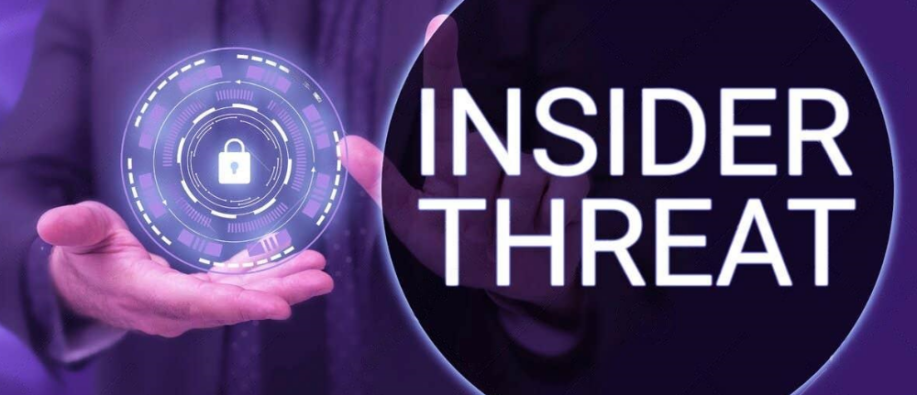Insider threats are among the most impactful cyberattacks for companies and enterprises. Such threats can take place at any time, exposing organizational data to wrongdoers who can use the information for ill purposes. It denotes a process when the internal public of companies creates cybersecurity concerns by stealing and sharing its confidential data.
Data states that more than 60% of cyber-attacks that occur daily are due to insider threats. Often, companies fail to trace an insider threat, which is why they fail to adopt appropriate mitigation tactics. It raises the requirement for safeguarding valuable company data from external as well as internal threats.
Let us understand the subject of insider threat comprehensively alongside insider threat types and examples in the following sections.
What is an Insider Threat?
An insider threat is a situation in which an insider creates danger for an organization willingly or unwillingly. In such cases, an internal person uses their legal access to break into company’s datasets and steals data to damage its objectives, resources, facilities, networks, and reputation. Insider attacks can be an outcome of intentional or unintentional intent to harm a company.
Many times, insiders mistakenly share confidential data with spammers and wrongdoers. However, such circumstances are totally a result of external cyber-attacks when criminals trap people to share confidential information in disguise.

Types of Insider Threats:
Malicious or intentional insider threats:
Malicious insiders are those internal people who use their credentials to illegally access a company’s intellectual property, steal data, and share it with other parties. Such people can be current or former employees of an organization whose credentials are still active. This type of insider threat has two sub-segments:
Lone wolf:
These are the insiders who intend to harm their company without an association with any other parties. They plan and cause damage to organizational resources by exposing them to the public.
Collaborator:
In such cases, insiders collaborate with third parties, chiefly market competitors, to damage organizational resources. Current or former employees use their active credentials to steal their company’s intellectual property and share it with third parties.
Negligent or unintentional insider threats:
These are the people who unintentionally or unknowingly leak or share their company’s intellectual property. Such situations can be the result of human error, carelessness, a lack of knowledge, phishing, and malware attacks.
Insider Threat examples
Let us evaluate a few insider attacks in recent times to understand their impact on the organizational structure:
Yahoo:
Yahoo experienced a major blow with insider threats in May 2022 when one of its research scientists allegedly stole trade data of the company. The employee reportedly received a job offer from one of the competitors of Yahoo and before leaving the company they copied 570,000 pages from the company’s drive that happened to be related to Yahoo’s product AdLearn and shared it with its competitor.
As a result, Yahoo lost its valuable data. However, the company ceased its ex-employee and charged them with three different allegations.
Tesla:
Tesla encountered backlash in 2023 when two of its ex-employees leaked confidential data about the company. The dataset included names, contact information, addresses, and employment records of more than 75,000 former and current employees.
An extensive query revealed that the stolen data also included information about Tesla’s self-driving vehicles and its features. Additionally, it also had bank account details of Tesla’s customers.
Tips to identify Insider threats:
- Integrate login and logout tracker for present and former employees.
- Identify illegal use of applications and software.
- Recognize atypical logins, including their time and location.
- Trace accounts that excessively download or copy company data.
- Assess unusual behavior of employees, including their performance, disagreements, sudden resignations, and others.
Methods to mitigate Insider attacks:
- Aware and educate employees on several types of cyber threats so that they do not share credentials with anyone suspicious inside or outside the organization.
- Employ Identity and Access Management (IAM) systems to distribute data access as per the position and role of the employees in the organization.
- Evaluate insider behavior with user behavior analytics (UBA) to identify individuals who can become insider threats.
- Adopt cybersecurity tactics like offensive security to detect system and network vulnerabilities, which can lead to insider attacks.
Concluding Remarks:
Insider attacks are complex to identify; therefore, it is challenging to mitigate or prevent them. Nevertheless, such threats can be equally dangerous as any other cyber-attack. To safeguard valuable data, companies must implement strategies that can address both external and insider threats. Additionally, continuous monitoring of weaknesses and vulnerabilities can help limit cyber threats. Check out our latest blogs to stay up to date on trending cyberattack practices.
You may also like to read:





